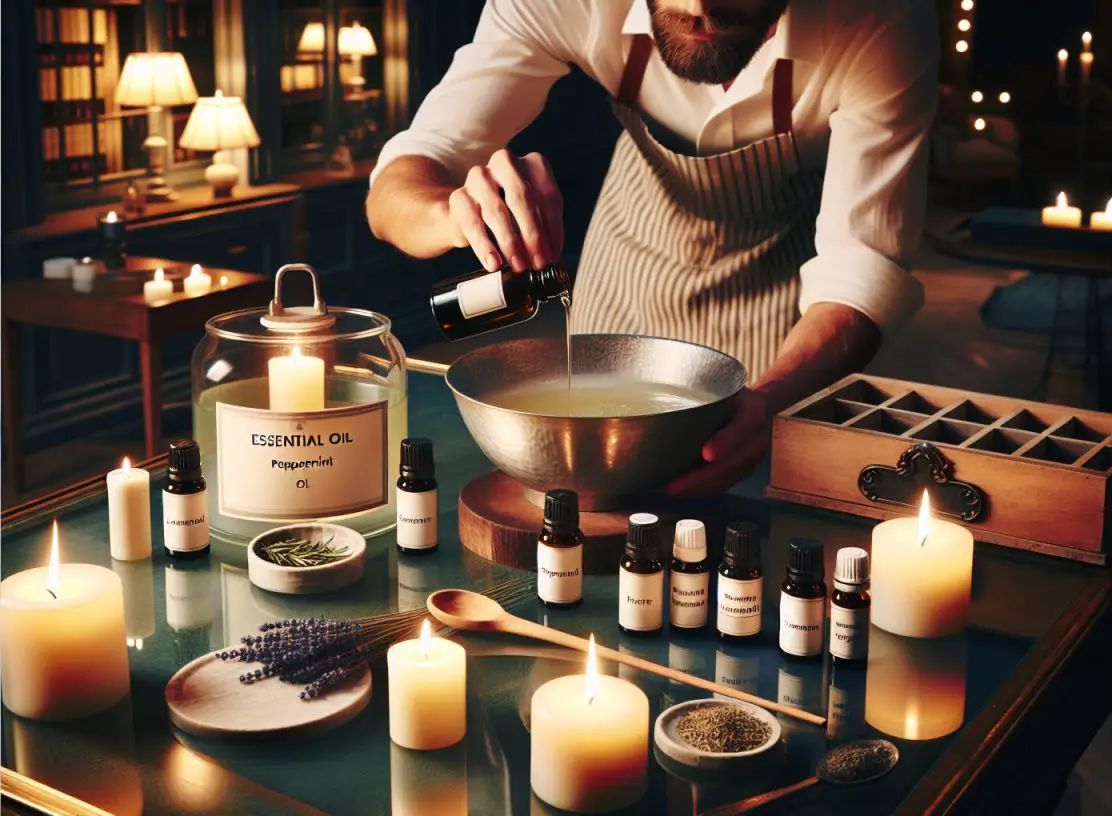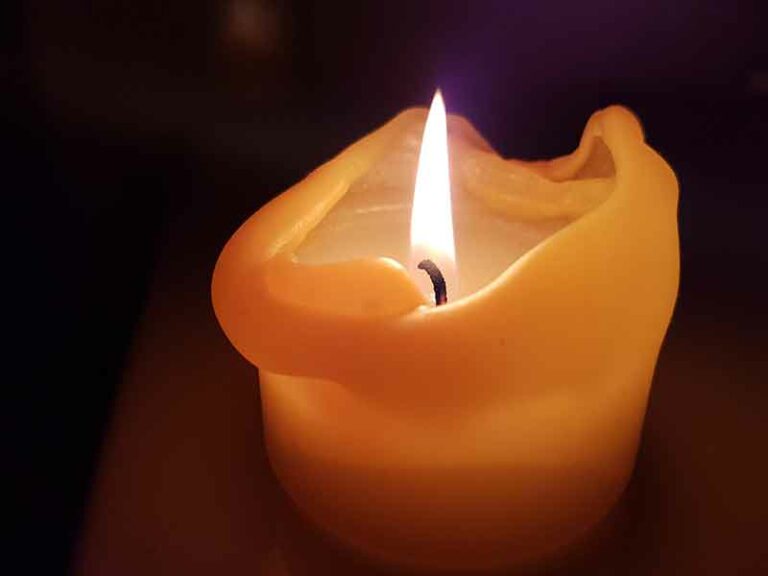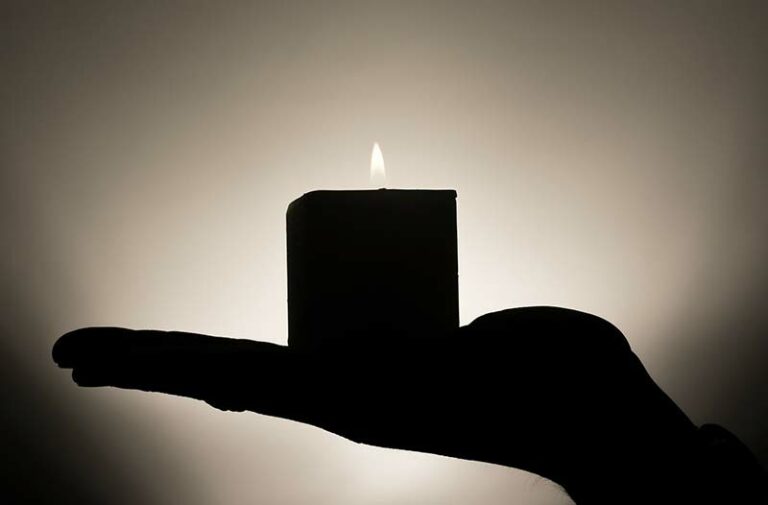Can I Use Essential Oils To Scent Candles?
Thinking of making your own scented candles? You may be wondering if you can use essential oils to add fragrance to your creations. Well, the answer is a resounding yes! Essential oils can be a fantastic option for scenting your candles, offering a natural and aromatic experience that can’t be replicated. In this article, we’ll explore how essential oils can be used to scent candles, the benefits of using them, and some popular essential oils to consider for your candle-making journey.
Whether you’re a seasoned candle maker or just starting out, this guide will help you infuse your candles with delightful scents that will captivate your senses.
Table of Contents
Benefits of Using Essential Oils in Candles
Enhanced Aromatherapy Experience
Using essential oils in candles can greatly enhance your aromatherapy experience. When the candles are lit, the heat causes the essential oils to vaporize and release their fragrance into the air. As you inhale the scented air, the aroma can help create a soothing and relaxing atmosphere. Different essential oils have various therapeutic properties, such as lavender for relaxation or eucalyptus for promoting focus and clarity. By incorporating essential oils into your candles, you can create a calming and enjoyable ambiance in your home.
Wide Variety of Fragrances to Choose From
One of the major benefits of using essential oils in candles is the wide variety of fragrances available. Whether you prefer floral scents like rose or jasmine, fresh and citrusy notes like lemon or grapefruit, or earthy aromas like sandalwood or patchouli, there is an essential oil to suit every preference. By utilizing essential oils in your candle making, you can create a diverse fragrance collection that caters to your personal taste or the mood you want to set in your living space.
Natural and Chemical-Free Option
Using essential oils in candles provides a natural and chemical-free alternative to synthetic fragrances. Many store-bought candles contain artificial fragrances that may contain potentially harmful chemicals. By using essential oils, you can be confident that you are inhaling natural and pure scents. This can be particularly beneficial for individuals with sensitivities or allergies to artificial fragrances. Furthermore, essential oils derived from plants offer additional benefits such as antibacterial or antiviral properties, making them a healthier choice for scenting your candles.
Considerations Before Using Essential Oils in Candles
Quality and Purity of Essential Oils
Before using essential oils in candles, it is essential to consider their quality and purity. Ensure that you purchase essential oils from reputable brands or suppliers that provide detailed information about the sourcing and extraction methods of their oils. High-quality essential oils are typically derived through steam distillation or cold-press extraction, preserving the integrity of the plant’s aromatic compounds. Avoid oils that contain additives or synthetic fragrances, as they may not provide the desired scent or therapeutic benefits.
Recommended Concentration Levels
When incorporating essential oils into candles, it is crucial to follow recommended concentration levels. Overloading your candles with essential oils can lead to an overpowering fragrance or affect the candle’s performance. As a general guideline, a safe concentration is around 5-10% of the total wax weight. For example, if you are using 500 grams of wax, you would add 25-50 grams of essential oil. It is always advisable to check the specific recommendations from the essential oil manufacturer or consult candle-making resources for precise instructions.
Safety Precautions
While essential oils have numerous benefits, it is important to take precautions when using them in candles. Essential oils are highly concentrated and should never be used directly on the skin or ingested. Additionally, certain essential oils may have specific safety concerns, such as phototoxicity or skin sensitization. Before incorporating any new essential oil into your candle-making, perform a patch test to ensure that you are not allergic or sensitive to it. Keep essential oils out of reach of children and pets, and always handle them in a well-ventilated area to prevent respiratory irritation.
Choosing the Right Essential Oils for Candle Making
Understanding Top, Middle, and Base Notes
When selecting essential oils for your candles, it is essential to understand the concept of top, middle, and base notes. These refer to the different stages at which the scent of the essential oil becomes noticeable when the candle is burning. Top notes are the initial scents that are immediately noticeable when the candle is lit, while middle notes emerge after the top notes have dissipated. Base notes are the lingering scents that provide depth and richness to the overall fragrance. By blending essential oils with different note categories, you can create complex and well-balanced scents for your candles.
Blending Essential Oils for Unique Scents
One of the exciting aspects of using essential oils in candle making is the ability to blend them together to create unique scents. Experimenting with different combinations of essential oils allows you to personalize your candles and find fragrance profiles that truly resonate with you. Consider combining complementary scents, such as lavender and vanilla, or create unexpected blends by combining floral and citrus notes. Keep track of your experiments and adjust the ratios of essential oils until you achieve the desired scent. The possibilities are endless, and blending is a fun way to tap into your creativity.
Researching the Possibilities
To make informed choices when selecting essential oils for your candles, it is beneficial to conduct thorough research. Explore the aromatic profiles, therapeutic properties, and safety considerations of different essential oils. Consider the intended purpose of your candles – whether it be relaxation, energizing, or promoting sleep, and choose essential oils that align with those goals. Online resources, books, and reputable candle-making communities can provide valuable information and guidance in your research. By arming yourself with knowledge, you can confidently select essential oils that will enhance your candle-making experience.
Methods of Incorporating Essential Oils into Candles
Precautions for Direct Additions
Adding essential oils directly to the melted wax may seem like a convenient method, but it requires caution. Some essential oils may contain components that can interfere with the proper combustion of the wick or cause the candle to burn unevenly. To avoid these issues, it is advisable to dilute the essential oils in a suitable carrier oil before adding them to the wax. This helps ensure even distribution of the scent throughout the candle and reduces the risk of any adverse effects on the burning performance.
Using Essential Oil Infused Wicks
An alternative method of incorporating essential oils into candles is by using essential oil-infused wicks. These wicks are pre-infused with the desired essential oil and provide a hassle-free way of scenting your candles. Simply insert the infused wick into your candle mold or container, pour the melted wax, and let it solidify. As the candle burns, the heat activates the essential oil within the wick, releasing the fragrance into the air. This method eliminates the need for direct additions of essential oils to the wax and ensures consistent scenting throughout the candle’s lifespan.
Scenting the Wax or Surface of the Candle
Another method of incorporating essential oils into candles is by scenting the wax or the surface of the candle. For scenting the wax, add the desired amount of essential oil to the melted wax and stir thoroughly to ensure even distribution. This method allows the essential oil to blend seamlessly with the wax, resulting in a consistent scent throughout the candle. Alternatively, you can also scent the surface of the candle by applying a small amount of essential oil on the cooled and hardened candle. This method provides a more subtle and gradual release of the fragrance.
Effective Techniques for Scenting Candles with Essential Oils
Creating a Stronger Scent Throw
To create a stronger scent throw with essential oils in your candles, there are several effective techniques you can employ. First, consider using essential oils with stronger aromatic profiles, such as citrus or spices. These oils tend to have more potent scents and can enhance the overall fragrance of your candles. Additionally, increasing the concentration of essential oils within the recommended limits can intensify the scent. Experiment with different ratios to find the right balance between a pleasing aroma and overwhelming fragrance. Finally, allowing your candles to cure for a couple of weeks after pouring can also enhance the scent throw as the fragrance develops and matures over time.
Different Techniques for Different Candle Types
Different candle types require different techniques for effective scenting with essential oils. For container candles, adding the essential oils to the melted wax or using essential oil-infused wicks are popular methods. These techniques ensure that the fragrance remains concentrated within the container, allowing for a more substantial scent throw. On the other hand, for pillar or taper candles, scenting the surface of the candle with essential oils can be more effective. This allows the fragrance to disperse into the surrounding environment as the candle burns. Experiment with different techniques to determine the most effective method for each type of candle you make.
Best Methods for Maximum Scent Retention
If maximizing the scent retention in your candles is a priority, there are specific methods you can utilize. One effective technique is to cure your candles for an extended period before burning them. Allowing the scent to fully develop and meld with the wax can result in a longer-lasting fragrance. Additionally, ensuring that your candles are properly stored in airtight containers or packaging can help retain the scent. Exposure to air and moisture can cause the essential oils to gradually dissipate, reducing the longevity of the fragrance. By implementing these techniques, you can enjoy candles that continue to emit their delightful scent over an extended period.
Effects of Essential Oils on Candle Performance
Potential Impact on Burning Time
Using essential oils in candles can potentially impact the burning time of the candles. Essential oils have different flashpoints, which is the temperature at which the oil can ignite. Some essential oils with lower flashpoints may cause the candles to burn faster or have a higher melting point. This can result in shorter burning times compared to candles scented with essential oils that have higher flashpoints. It is important to consider this factor when making candles to ensure that the total burn time meets your expectations.
Color Alteration and Potential Staining
Certain essential oils, particularly those derived from botanical materials like flowers or spices, can cause color alterations in candles. These oils may impart a natural color to the wax, which can be appealing to some candle makers. However, the possibility of color alteration should be considered when choosing essential oils and coordinating them with the desired candle color. Additionally, some essential oils may contain pigments that can stain fabrics or surfaces. Take caution when using these oils and avoid placing candles scented with them on delicate or porous materials.
Testing and Monitoring Performance
To ensure the optimal performance of your candles scented with essential oils, testing is crucial. Always conduct small test batches before scaling up production to observe the effects of essential oils on the overall candle performance. Monitor factors such as burn time, scent throw, and color changes. By tracking these variables, you can make any necessary adjustments or modifications to your candle-making process. This hands-on approach ensures that you consistently produce high-quality candles that meet your desired specifications.
Safety Considerations When Using Essential Oils in Candles
Potential Fire Hazards
When using essential oils in candles, it is important to be aware of the potential fire hazards they may present. Essential oils are flammable and may have low flashpoints, making them susceptible to combustion when exposed to heat or an open flame. Ensure that the candles are placed on a stable, heat-resistant surface, away from flammable materials or drafts. Never leave a burning candle unattended and follow proper candle safety guidelines to minimize the risk of fire accidents.
Skin Sensitivity and Allergies
While essential oils offer numerous benefits, they can also cause skin sensitivity or allergies in some individuals. It is important to be aware of any existing allergies or sensitivities you may have and perform a patch test before using a specific essential oil in your candles. Apply a small amount of the diluted essential oil to a small area of your skin and observe for any adverse reactions for at least 24 hours. If any irritation or discomfort occurs, discontinue use of that particular oil. Always prioritize the safety and well-being of yourself and those around you.
Proper Storage of Essential Oils
Proper storage of essential oils is essential to maintain their quality, potency, and longevity. Essential oils should be stored in a cool, dark place, away from direct sunlight or heat sources. Exposure to light, air, or high temperatures can cause the oils to oxidize, deteriorate, or lose their aromatic properties. Keep essential oils tightly sealed in amber or dark glass bottles to protect them from degradation. Additionally, ensure that essential oils are stored out of reach of children and pets to prevent accidental ingestion or spills.
Additional Tips and Tricks for Using Essential Oils in Candles
Experimentation and Personalization
When using essential oils in candles, don’t be afraid to experiment and personalize your scents. Get creative by combining different essential oils to create your own unique fragrance blends. Explore new possibilities by incorporating unexpected scents or adding herbal elements like dried lavender or rose petals to your candles. The beauty of using essential oils is the ability to customize your candle-making experience according to your preferences and personal style.
Layering Scents for Complex Fragrances
Layering different scents is a technique commonly used in perfumery, and it can also be applied to candle making. Create complex and multi-dimensional fragrances by layering essential oils with complementary notes. Start with a base note oil as the foundation, followed by a middle note oil to add complexity, and finish with a top note oil to provide freshness and immediate impact. This layering technique adds depth and sophistication to your candles, allowing for a more dynamic fragrance experience.
Incorporating Essential Oils in Candle Gifts
Using essential oils in candle making opens up a world of possibilities when it comes to gifting. Handmade candles scented with essential oils make thoughtful and personalized gifts for any occasion. Customize the scents according to the recipient’s preferences or create themed candles for specific events. Package the candles elegantly and include a note explaining the therapeutic benefits of the essential oils used. This adds an extra touch of thoughtfulness and demonstrates the effort put into creating a truly special gift.
Comparing Essential Oils to Synthetic Fragrances in Candles
Health and Environmental Considerations
When comparing essential oils to synthetic fragrances in candles, health and environmental considerations come into play. Synthetic fragrances often contain chemicals that can cause respiratory irritation or trigger allergies in sensitive individuals. Essential oils, on the other hand, are derived from natural plant sources and can offer therapeutic benefits. They are generally considered safer and healthier alternatives to synthetic fragrances. From an environmental standpoint, essential oils are also more sustainable as they are derived from renewable resources, reducing the carbon footprint associated with candle production.
Longevity and Intensity of Fragrance
In terms of longevity and intensity of fragrance, essential oils can compete with synthetic fragrances. While some synthetic fragrances may have a more immediate and potent scent throw, essential oils can offer a more subtle and nuanced experience. The fragrance of essential oil candles tends to develop and evolve over time, creating a more layered and complex aroma. Furthermore, the natural scents derived from essential oils can evoke a deeper connection with nature, enhancing the overall sensory experience.
Personal Preference and Customization
The choice between essential oils and synthetic fragrances ultimately comes down to personal preference and customization. Essential oils offer the opportunity to create tailor-made scents based on individual preferences and desired therapeutic effects. You have the freedom to experiment, blend, and adjust the scent profiles to your liking. Synthetic fragrances, on the other hand, offer a wide range of ready-made scents but may lack the natural, authentic aroma that essential oils provide. Consider your personal values, the intended use of the candles, and your desire for customization when deciding between the two options.
Conclusion
By incorporating essential oils into your candle-making, you can unlock a multitude of benefits. From enhancing the aromatherapy experience to having a wide variety of fragrances to choose from, essential oils offer a delightful and natural alternative to synthetic fragrances. It is important to consider factors such as the quality and purity of the oils, concentration levels, and safety precautions to ensure a successful and satisfying candle-making experience.
Experiment, personalize, and explore the endless possibilities that essential oils bring to your candles. Enjoy the delightful scents and the endless opportunities for creativity and personalization. Let your candles become a source of relaxation, rejuvenation, and ambiance in your home.








